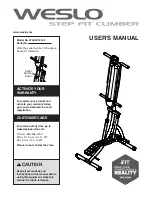
P
APER AND OTHER PRINT MEDIA
19
PAPER WEIGHTS
ASF min.
ASF max.
Manual min.
Manual max.
g/m
2
lb.
g/m
2
lb.
g/m
2
lb.
g/m
2
lb.
Single sheets
Weight allowed for single sheets:
64
16
120
32
60
16
200
50
Weight recommended for single sheets *:
70
19
90
24
Envelopes
Weight allowed for envelopes:
75
20
100
27
75
20
120
32
Recommended weight for envelopes:
80
21
Cards
Weight allowed for cards:
100
27
150
39
100
27
200
50
Recommended weight for cards:
100
27
135
36
Banners
Weight allowed for banners:
70
19
90
24
Recommended weight for banners:
80
21
Transparencies
Thickness of film permitted:
90
µ
m
125
µ
m
90
µ
m
125
µ
m
Thickness of film recommended:
100
µ
m
120
µ
m
* For best results, use of 80 g/m
2
(21 lb.) single sheets is recommended.
The use of single sheets having a weight of between 60 and 70 g/m
2
(inclusive) is recommended only for printing or
copying texts.
PRECAUTIONS
•
Use of poor quality paper can adversely affect
the quality of the print/copy.
•
Check that the sheets of paper are loaded
without impediment, and that there is not too
much or insufficient play.
•
Sheets of paper and envelopes must not be bent,
creased or torn, as this may cause them to jam or
prevent them from being fed correctly into the
machine. Only use paper that is in good condition
and meets the requirements listed in this chapter.
•
Only load paper of the same format and
thickness into the ASF at any one time.
•
Printing on both sides of sheets increases the
risk of jamming or feed anomalies and could
cause the ink to smudge.
•
NEVER attempt to print on the back of
envelopes.
•
When using special print media print ONLY on
the side of the paper marked as being the print
side.
•
When adding paper to the ASF, insert it BEHIND
the paper already loaded. It is preferable that all
the paper be reloaded together.
•
When using special print media, read carefully
the manufacturer's instructions on the packaging.
•
Note that pages with a high print density will tend
to curl. Such pages may mark the back of the
sheet stacked above them, because they require
a longer drying time.
A specific option may be selected via the Printer
Monitor (Drying Time). Alternatively, remove the
document from the machine immediately and
leave it to dry before handling it.
Summary of Contents for JET-LAB 600@
Page 1: ...237204C 01 User s manual...
Page 3: ...BLANK PAGE...
Page 11: ...BLANK PAGE...
Page 15: ...BLANK PAGE...
Page 16: ...INSTALLATION...
Page 17: ......
Page 30: ...PAPER AND OTHER PRINT MEDIA...
Page 31: ......
Page 35: ...BLANK PAGE...
Page 36: ...FACSIMILE...
Page 37: ......
Page 82: ...TELEPHONE...
Page 83: ......
Page 88: ...THE INTERNET...
Page 89: ......
Page 96: ...PHOTOCOPIER...
Page 97: ......
Page 101: ...BLANK PAGE...
Page 102: ...PRINTER...
Page 103: ......
Page 106: ...SCANNER...
Page 107: ......
Page 109: ...BLANK PAGE...
Page 110: ...PC COLOUR FAX APPLICATION...
Page 111: ......
Page 113: ...BLANK PAGE...
Page 114: ...MAINTENANCE...
Page 115: ......
Page 130: ...Test Sheet No 1...
















































